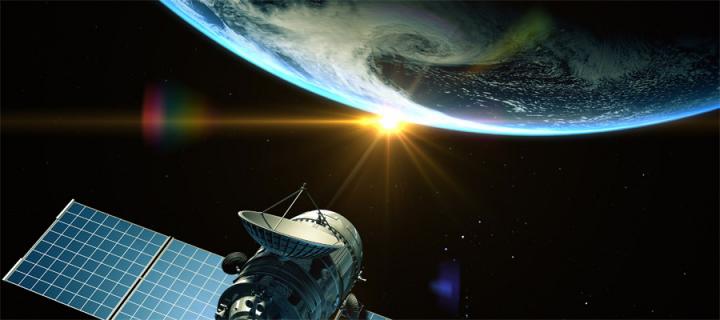Dreams of space and sustainability go together
Challenges and opportunities for sustainability in space travel
Blog post by Anton Dubenko
On the 21st of August, the Royal Observatory hosted a Panel Discussion: The Future of Space Exploration. The event was moderated by Prof David Alexander, Director of the Rice Space Institute at Rice University. The special guest was NASA astronaut Dr Kate Rubins. She was joined by a diverse group of academics from the University of Edinburgh: Prof Adam Stokes, Prof Beth Biller, Prof Kenneth Baillie and Prof Subramanian Ramamoorthy, who are specialists in robotics, exoplanets, translational genomics and AI. The panel shared their thoughts on the realisation and impact of space missions, focusing on the ambitious Artemis programme, the Moon exploration programme led by NASA. One of its key aims is to establish a sustainable Base capable of using lunar materials and solar energy to support long-term missions to carry out research on the Moon.
At first glance, the concept of space travel may seem just a whim of the curious human mind. Certainly, novelty-seeking is responsible for some pushing of the technological horizons, including space exploration. But there is much more practicality in it. Technologies developed by the space industry are already widely applied to improve our lives and our planet. For example, navigation, communication, monitoring of climate change and critical infrastructure are all supported by complex satellite systems whose construction was vastly accelerated by space research. Programmes such as the Artemis inspire the next generation of STEM leaders and provide funding for new cohorts of students, academics and entrepreneurs to design novel solutions for space exploration. Prof David Alexander also proposed that the problems encountered by humanity in space can stimulate thinking, which results in innovations for economic and social development on Earth.
A future lunar economy may become a test bed or a birthplace of more efficient technologies that could contribute to the construction of a more sustainable economic growth model on Earth

The prospects of colonising other space objects present a constellation of sustainability challenges similar to those faced by modern society on Earth. For example, people on a spacecraft must have access to clean water. The International Space Station’s water recovery system was successfully applied to reduce potable water consumption at NASA’s Sustainability Base by 90% in comparison with conventional buildings of comparable size. The facility’s dual-piped system collects once-used water. This “grey water” is filtered through a combination of forward and reverse osmosis and returned to the facility to operate in toilets, computer cooling and irrigation systems. Another remarkable feature of the Sustainability Base is an efficient energy system. The photovoltaic solar panels and solid oxide fuel technology, originally developed for NASA’s Mars programme, generate more energy than required for the office’s operation.
The Sustainability Base is a living example of synergy between terrestrial and space applications, but the Artemis programme may offer even more. Due to the limited resupplying capabilities, space agencies aim to design projects incorporating the closed-loop paradigm. Thus, space missions are becoming more and more governed by the principles of the circular economy, ie to eliminate waste and pollution, circulating products and materials at their highest value and to regenerate natural ecosystems. One of the examples of such practices is recycling and reusing spacecraft components. According to SpaceX president Gwynne Shotwell, reusing the Falcon 9 rocket reduces the launch costs by more than half. This approach can prevent the accumulation of space debris and waste in cislunar space and help decrease the cost and environmental impact of manufacturing new spacecraft parts. Another essential element of long-term cislunar operations will be on-site resource extraction and utilisation. Using water deposits on the Moon is critical to establish a self-sustaining ecosystem there and to cut down the cost and risk of transporting water from Earth. In addition, astronauts may mine the rare earth minerals on the Moon’s surface to produce batteries for electric vehicles and solar energy installations. Thus, a future lunar economy may become a test bed or a birthplace of more efficient technologies that could contribute to the construction of a more sustainable economic growth model on Earth.
One may argue that the costs of space missions are inexcusably high, and new sustainability technologies could be developed without expensive tests outside the Earth. However, in the overall government budget, the space industry expenses correspond to a relatively small fraction. According to the Department for Science, Innovation and Technology, the UK government's annual spending on space was estimated to be around 0.09% of its budget (0.05% of GDP or £900 million) in 2022. In contrast, the US government spent almost 1% of its budget (0.24% of GDP or £50 bn) on its space programmes in 2022, making it the country with the highest space expenditure in the world.
Space exploration also unites people globally in their goal to expand the physical and intellectual horizons of humanity and to understand the world better. Dr Rubins also emphasised that the Artemis programme is an international project. NASA has established the Artemis Accords, a multilateral arrangement at the core of the programme, which sets the principles of cooperation in space. It is intended not only to support the development of space technologies, but to enhance peaceful relationships between participating nations. As of September 16th 2023, twenty-nine countries have signed the Artemis Accords. However, a 2011 law called the Wolf Amendment effectively bans the US from working with China in space. In addition, one of the ISS partner countries, Russia, opted out and intends to collaborate with China. These facts pose questions such as, does the Artemis Programme fuel further divide between superpowers, and is it actually capable to achieve its declared peace-promoting goals? Peace is recognised as one of the Sustainable Development Goals by the UN. Working on achieving all of them seems to be a worthy challenge for modern humanity and we should try to make the most of the positive potential of initiatives such as the Artemis Programme.

